Search results for: 'alabaster'
-
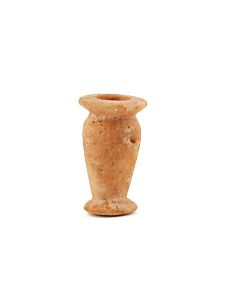 Alabaster vessel
Alabaster vesselSlender container made of beige stone. From the Eastern Mediterranean.
Price: on request Kunstvolle baktrische Schale aus Alabaster
Kunstvolle baktrische Schale aus AlabasterZylindrischer Körper, flache, ausladende Lippe. Dünnwandig, sehr fein gearbeitet. Musealer Zustand, sehr schönes Äderungsmuster.
Price: on request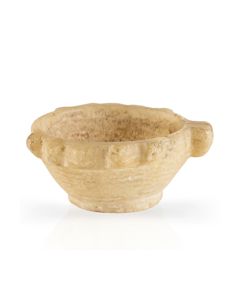 Egyptian alabaster bowl from Luxor
Egyptian alabaster bowl from LuxorThe small stone vessel is an offering bowl for libation. From the collection of Egyptologist Professor Wiedemann. 12th to 18th dynasty of Ancient Egypt
Price: on request Large Egyptian Shabti made of Alabaster
Large Egyptian Shabti made of AlabasterStunning funerary statuette from the 19th dynasty of Ancient Egypt. Marvelous provenance and publications in numerous catalogues.
Price: on request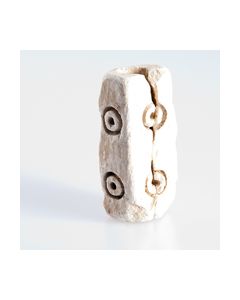 Verziertes baktrisches Alabastergefäß
Verziertes baktrisches AlabastergefäßInteressante, streng rechtwinklige Form, mit Ringbohrungen verziert. Massive Ausführung.
Price: on request Massives baktrisches Alabastergefäß
Massives baktrisches AlabastergefäßZylindrische Ausführung. Schöne Steinmusterung mit mehreren parallel verlaufenden, polychromen Adern.
Price: on request Baktrisches Alabastergefäß für kultische Zwecke
Baktrisches Alabastergefäß für kultische ZweckeSäulenarttige Form, in einer Seite Mulde mit einer dunklen Ablagerungskruste, evtl. Spuren von Weihrauch.
Price: on request Baktrisches Alabastergefäß - einem Säulenidol ähnlich
Baktrisches Alabastergefäß - einem Säulenidol ähnlichMit ausgeprägter Standfläche, in der Mitte verjüngt, öffnet sich konisch nach oben. Spätes 3. Jt. - frühes 2. Jt. v. Chr.
Price: on request Baktrisches Alabastergefäß
Baktrisches AlabastergefäßMit breiter Lippe, innen aufwendig glatt gearbeitet. Hellgelber Stein mit schöner Aderung. Filigrane Ausführung.
Price: on request Kunstvolle Alabasterschale
Kunstvolle AlabasterschaleZylindrischer Körper, flache, ausladende Lippe. Sehr filigranes Stück mit dünnen Wänden und schöner Aderung. 3. - 2. Jt. v. Chr.
Price: on request Flaschenförmiges Alabastergefäß
Flaschenförmiges AlabastergefäßRechteckiger Querschnitt der Standfläche, verjüngt sich zum langen zylindrischen Hals. Interessante, für diese Gefäße sehr ungewöhnliche Form. 3. - 2. Jt. v. Chr.
Price: on request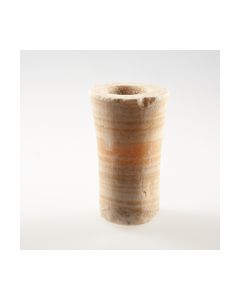 Baktrisches Alabastergefäß für kultische Zwecke
Baktrisches Alabastergefäß für kultische ZweckeSäulenartige Form, öffnet sich leicht zur Oberseite hin. In diese ist eine Mulde eingelassen. Das Gefäß ähnelt in seiner Form den baktrischen Säulenidolen.
Price: on request Small Egyptian Kohl vessel
Small Egyptian Kohl vesselThe stone pot was used for Kohl, the eye cosmetic of the ancient Egyptians. Vessel with well preserved body and missing rim. From the 2nd Millenium BC.
Price: on request Small Egyptian Kohl vessel
Small Egyptian Kohl vesselThe stone pot was used for Kohl, the eye cosmetic of the ancient Egyptians. Vessel with well preserved body and missing rim. From the 2nd Millenium BC.
Price: on request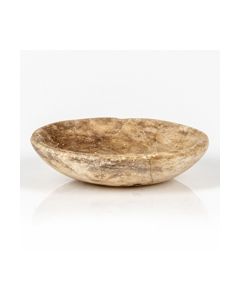 Shallow bowl from Egypt
Shallow bowl from EgyptMade of nicely banded Egyptian alabaster. High quality bowl with a fine polish. Early Dynastic to Old Kingdom.
Price: on request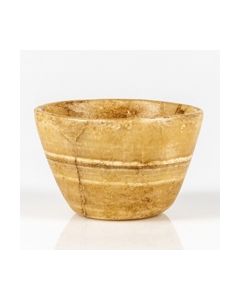 Egyptian stone bowl
Egyptian stone bowlThis wonderful bowl of banded stone was probably used for ritual purposes. From the Early Dynastic Period or Old Kingdom of ancient Egypt.
Price: on request Egyptian stone bowl
Egyptian stone bowlThis wonderful and relatively large bowl of banded stone was probably used for ritual purposes. From the Early Dynastic Period or Old Kingdom of ancient Egypt.
Price: on request Slender Egyptian stone beaker
Slender Egyptian stone beakerThe small and tall stone vessel is made of alabaster. From the collection of Egyptologist Professor Wiedemann.
Price: on request Egyptian chalice
Egyptian chaliceThe thin-walled stone cup is reminiscent of a lotus bud. From the collection of Egyptologist Professor Wiedemann. 18th dynasty of Ancient Egypt.
Price: on request Egyptian stone beaker
Egyptian stone beakerThe elegant stone vase was probably used as an ointment vessel. 5th to 6th dynasty of ancient Egypt, Old Kingdom.
Price: on request Egyptian stone vessel from Luxor
Egyptian stone vessel from LuxorThe cosmetic vessel is of a rare type. From the collection of Egyptologist Professor Wiedemann. Middle Kingdom of Ancient Egypt
Price: on request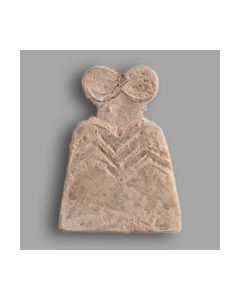 Syrisches Augenidol vom Tell Brak-Typ
Syrisches Augenidol vom Tell Brak-TypHervorragender Zustand mit schön erhaltener Oberfläche. Begutachtet durch Prof. Lambert, mit Notiz aus seiner Hand. Fund aus Tell Brak in den 1920er Jahren.
Price: on request

